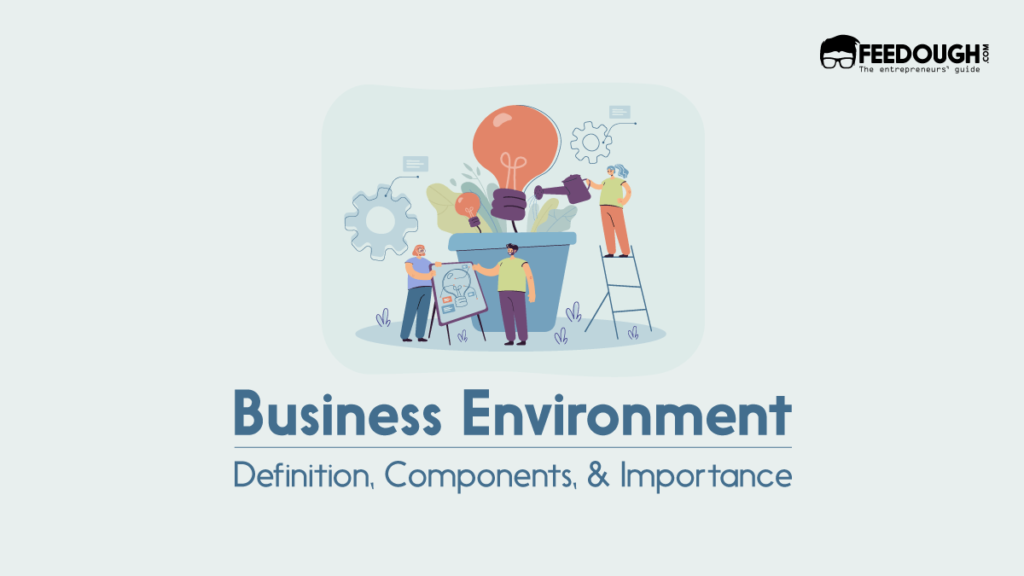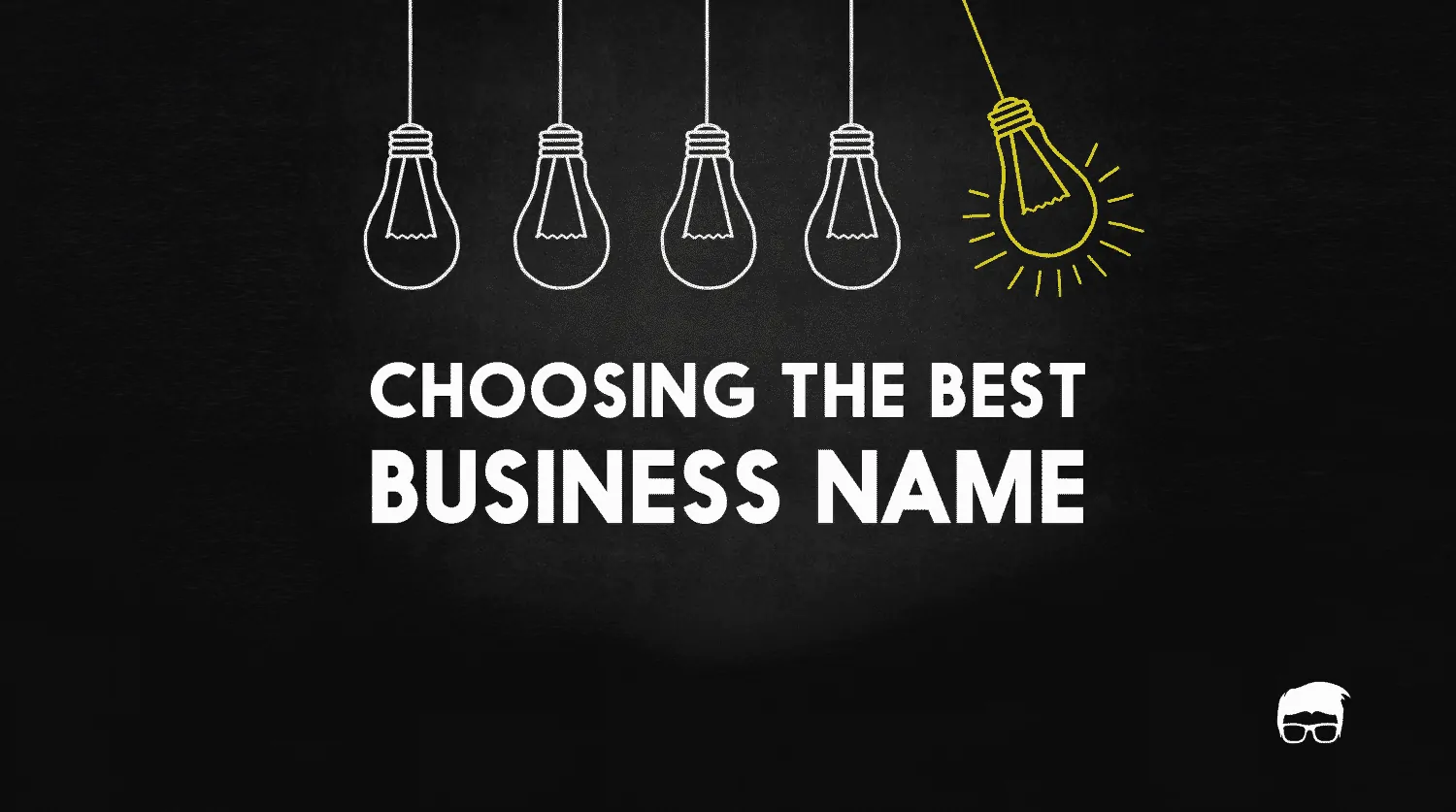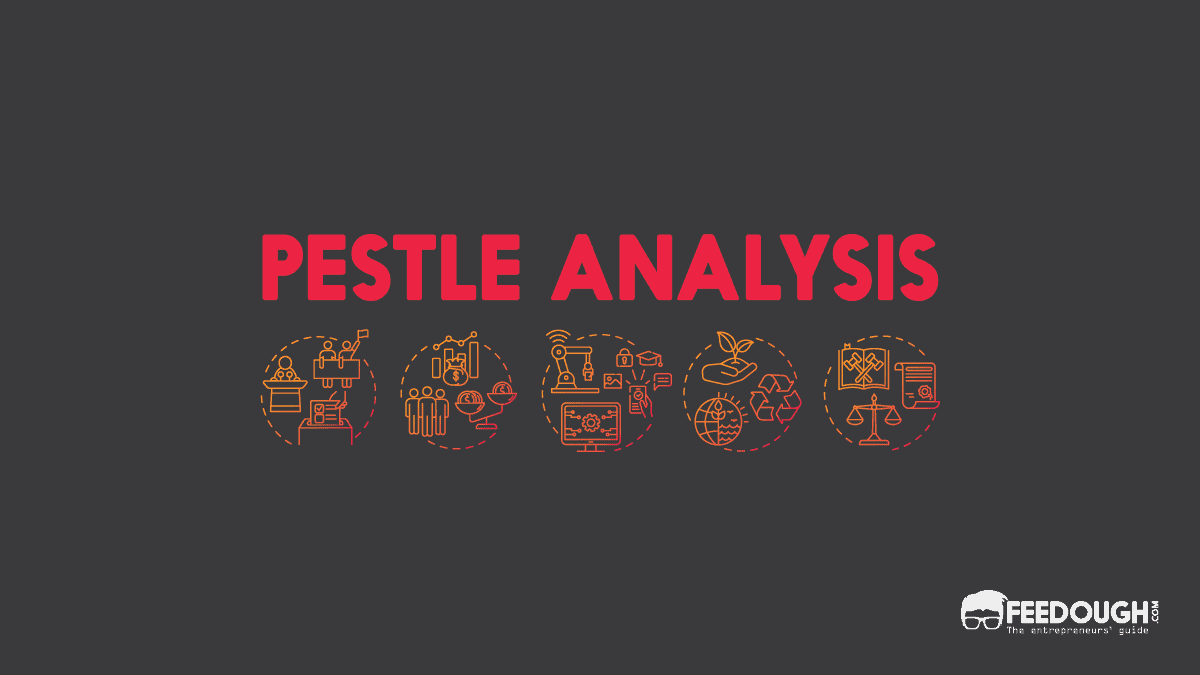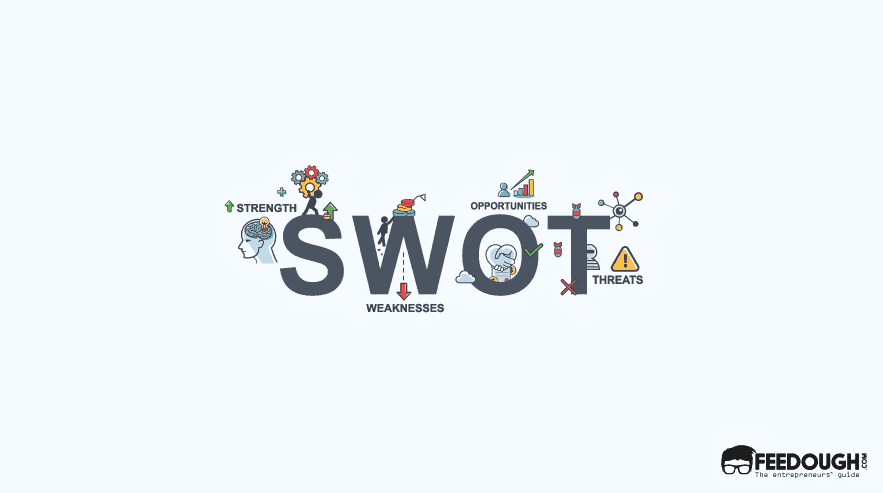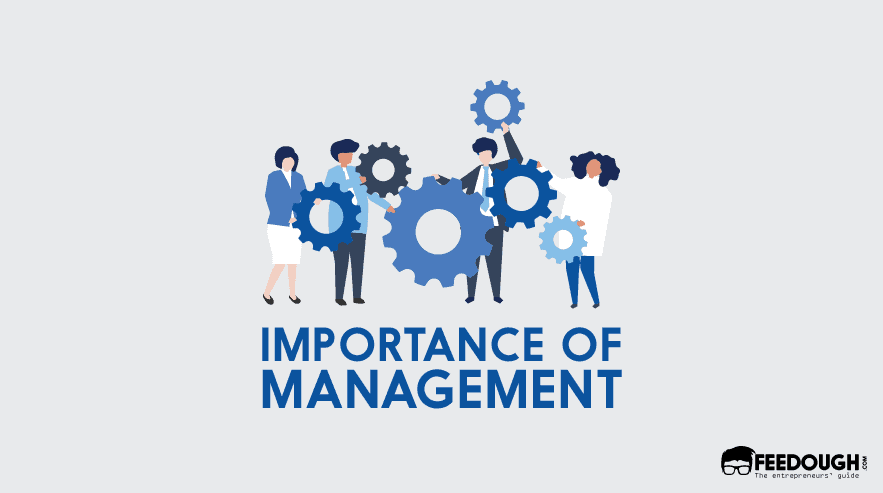Several internal and external factors directly or indirectly influence business operations. While some of these are within the business’s control, most of these are not; and the business has to adapt itself to avoid being affected by changes in such factors. Both of them combined forms the business environment.
Today’s fast-paced business world witnesses a trend of a rather dynamic business environment – that is, it’s never stable. Hence, keeping track of these changing trends, demands, strategies, and policies is crucial in the business world.
But first, what is a business environment and what are the factors that influence it?
What Is Business Environment?
A business environment is a combination of internal and external factors and forces that significantly influence the operations of a business.
The business environment comprises an internal and external environment that directly or indirectly affects business operations.
- Internal Environment: It includes all the factors that are well within the control of a company. These factors are relatively predictable and can be worked on by the company to eliminate forces that negatively impact its operations.
- External Environment: It includes factors that exist outside the company’s control. They tend to be unpredictable as a company cannot possibly control or predict a change in them. Their unpredictable nature has the potential to abruptly hinder or even boost a company’s functioning.
Components Of Business Environment
The business environment can be categorised into two types based on the factors within the control or outside the control of a business.
Internal Environment
The internal business environment constitutes several internal forces or elements within the control of a business that influences its operations. These include:
- Value System: It is the ethical belief that guides the business towards achieving its mission and objective. The value system includes all components that form a business’s regulatory framework – organisational culture, climate, work processes, management practices and organisational norms.
- Vision, Mission, and Objectives: The vision, mission, and objective of a business relate to what it wants to achieve or accomplish in future. It is the reason why the business exists.
- Organisational Structure: It outlines how the activities are directed within the organisation to achieve its goals. It includes the rules, roles, and responsibilities, along with how tasks are delegated and how the information flows among the organisation’s levels.
- Corporate Culture: It is a powerful system of shared norms and attitudes that works as a homogenising factor for an organisation’s employees and gets appropriated by them.
- Human Resources: Human resources form all the employees and other personnel associated with the business. It forms the most valuable asset of the organisation as success or failure depends on it.
- Physical Resources and Technological Capabilities: It includes tangible assets and the technical know-how that play an essential role in ascertaining the business’s competitive capability and future growth prospects.
External Environment
External components are those factors that a business cannot control. These exist beyond a business’ jurisdiction and supervision limit. External components influencing a business environment are further classified into two categories:
- Micro Environment
- Macro Environment
Micro Environment
Micro environment is the business’s immediate external environment that influences its performance as it has a direct bearing on the firm’s regular business operations.
It includes factors outside of the business’s control but can be analysed and worked upon by managing the business to prevent any business losses.
Micro factors include:
- Customers comprise the target group of the business.
- Competitors are other market players who target a similar target group and provide similar offerings.
- Media is the channel the business use to market its offering to the customer.
- Suppliers include all the parties that provide the business with the resources it needs to perform its operations.
- Intermediaries comprise the parties involved in delivering the offering to the final customers.
- Partners are all external entities like advertising agencies, market research organisations, consultants, etc., who conduct business with the organisation and satisfy customer needs.
- Public includes any group with actual or potential interest in the business’s operations or a group that affects its ability to serve its customers.
Macro Environment: PESTLE
The macro environment includes remote environmental factors that influence an organisation. The extent of influence a macro element can have on a business is significant as they usually affect the industry as a whole.
These factors are classified under PESTLE: P – Political, E – Environmental, S – Social, T – Technological, L – Legal, E – Economical.
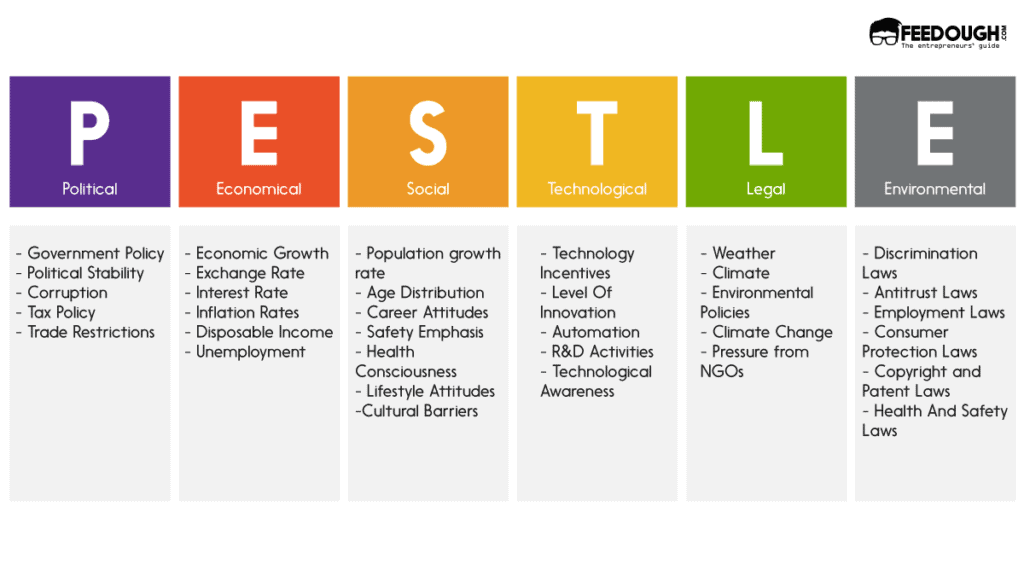
- Political Factors comprise government policies, political stability, corruption in the system, tax policies, labour laws, and trade restrictions that affect the business or the industry.
- Economical Factors relate to the economy of the country. They include economic growth, exchange rate, interest and inflation rates, etc.
- Social Factors comprise the demographics of the country. They include population growth rate, age distribution, career attitudes, health consciousness, etc.
- Technological Factors pertain to innovation in technology that affects the operations of the business. This refers to automation, research and development activities, technological awareness, etc.
- Legal Factors are laws that affect business operations. They include business-specific, industry-specific, and even state-specific laws.
- Environmental Factors comprise of all those that influence or are determined by the environment a business operates in. It includes the weather, climate, environmental policies, and even pressure from NGOs to care for the environment.
Importance of Business Environment
The market is essentially flooded with competing businesses. It is, thus, integral for a business to keep a lookout for the forces that affect it.
Emphasis is laid on maintaining continuous interaction with a company’s business environment. Understanding this environment allows companies to –
- Plan For Long Term: A sound knowledge of the business environment helps the company know its advantages and limitations, making it easier to choose the better positioning and plan to stay in the market for the long term.
- Identify Opportunities and Trends – Timely analysis allows a company to identify and consequently explore new opportunities and better performance ideas. A business opportunity is a factor that, upon identifying, allows the initiation of a business venture or aids the development of an existing business. An example of this is Nokia, a company that has previously held a whopping 49.9% of the global market share for mobile phones. However, the company did not adapt to the market’s changing demands as it failed to analyse new trends. Keeping a constant lookout for the new trends that rival firms are setting allows the company to adapt accordingly.
- Identify threats – Identifying potential threats to the business is another reason why a company needs to keep a watch on its environment. Threats are factors that have the potential to hurt a business. Steering clear of any possible threats ahead of time is integral for the survival of a company. Staying updated and adapting to the turbulent state of the overall business environment grants the company better flexibility when it comes to coping when a sudden, unexpected threat approaches the company. Understanding these conditions and forces thoroughly allows analysts to determine what direction the company should steer towards to stay relevant in the market.
- Gain First- Mover Advantage – A company gains the first-mover’s advantage if it succeeds to identify market demands at the right time. This allows the company to create its brand and gain brand recognition which benefits the business in the long run. As time passes, competitors try to enter the market after having examined the product’s expansive market demand. By that time, the first mover has plenty of time to establish strong customer loyalty and hence a significant market share which will be hard to compete with. A closer look at the history of Amazon shows how Jeff Bezos had recognised the power of the internet after having come across a statistic that claimed that the internet would change the way businesses operate. Identifying the internet’s potential ahead of time has made Amazon the world’s largest e-commerce company today.
Features Of Business Environment
A business environment is:
- Dynamic: The constant changing of the environment – be it socially, politically, economically and technologically – results in the dynamic nature of the business environment. A heavy interrelatedness of factors that consequently lead to this ever-changing environment is witnessed.
- Unpredictable: Due to its dynamic nature, an air of uncertainty always persists. Precognition is impossible, and hence, there is no way to foresee a future event that might impact the business environment.
- Complex: The interrelatedness of factors and circumstances form a rather tangled environment which is often difficult to analyse. It is an arduous task to keep track of the sources and their impacts on conditions and forces that make up the business environment. Hence, it is a complex task to measure the relative impact a certain force may have on a business.
- Susceptible: It is difficult to foresee the impact a slight change in the environment can have on a business. An insignificant change may influence a company’s operations largely. It has the potential to impact a business’ entire existence, its revenue and development.
- Relative: The business environment is not the same at all places. It varies from place to place. The political crisis in one nation affects the business environment only in that nation, not elsewhere. Hence, the business environment is a relative concept.
- Multiple-angled: A social, political or economic occurrence may have different impacts on different businesses. A political move that seems beneficial for one business might seem threatening to another. Hence, there exist multiple perceptions in a business environment.
Go On, Tell Us What You Think!
Did we miss something? Come on! Tell us what you think of our article on the business environment in the comments section.
A startup enthusiast who enjoys reading about successful entrepreneurs and writing about topics that involve the study of different markets.
